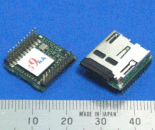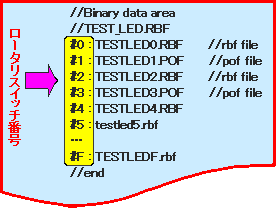Product Summary
'microSD-CONF' is a module that configures FPGA using a commercially available microSD card, and has many useful functions.
![]() Switch between up to 16 programming files
Switch between up to 16 programming files
![]() Fast configuration possible
Fast configuration possible
![]() Configurable to multiple FPGAs
Configurable to multiple FPGAs
![]() Ultimate size equivalent to Micro SD socket (15.97 x 16.50mm)
Ultimate size equivalent to Micro SD socket (15.97 x 16.50mm)
![]() microSD-CONF module can be reused on multiple boards
microSD-CONF module can be reused on multiple boards
![]() Easy to use, even those who cannot handle Quartus II can configure the FPGA
Easy to use, even those who cannot handle Quartus II can configure the FPGA
![]() Works even if the micro SD card is removed (microSD-CONF2)
Works even if the micro SD card is removed (microSD-CONF2)
![]() Configuration transfer from built-in NAND Flash to FPGA is even faster (microSD-CONF2)
Configuration transfer from built-in NAND Flash to FPGA is even faster (microSD-CONF2)
![]() Update feature allows future additions to be updated via JTAG cable
Update feature allows future additions to be updated via JTAG cable
Function introduction
Switch between up to 16 programming files
You can use a FAT16 formatted micro SD card up to 2GB and store multiple programming files as space permits. A maximum of 16 programming files from among them can be specified in the control file. The control file is a normal text file, so it is easy to edit. In addition to selecting the programming file, you can also set the transfer rate, number of configuration retries, interval from the rising edge of nCONFIG to the rising edge of nSTATUS, and the start of DCLK output from the rising edge of nSTATUS. It is possible to specify the interval etc. in detail.
Figure 1. Control file example (click for detailed control file)
The 16 numbers from "#0" to "#F" described in the control file are linked to the rotary switch mounted on the board, and the corresponding programming file can be selected simply by switching the rotary switch.
This is useful in a variety of situations, such as comparing operations using multiple versions of programming files, or demonstrating by instantly switching between multiple applications in promotional situations.
Fast configuration possible
Compared to using a download cable to transfer the programming file from the PC to the FPGA, the transfer speed is overwhelmingly faster.
In FPP (Fast Passive Parallel), the transfer clock (CCLK (DCLK) output) can be selected from the following.
50MHz(default),25MHz, 12.5MHz, 8.33MHz, 6.25MHz,5MHz, 3.125MHz,
1.56MHz, 0.78MHz, 0.39MHz and Master (Active) mode (CCLK (DCLK) input)
(Master (Active) will be supported soon).
In addition to FPP, PS (Passive Serial) is also supported.
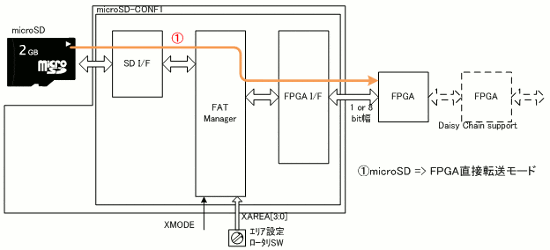
Figure 2. Block diagram of microSD-CONF1
Configurable to multiple FPGAs
Configuring multiple large FPGAs can take a significant amount of time.
microSD-CONF can configure up to 8 FPGAs in parallel at the same time.
Ultimate Socket Size
This is the ultimate size (15.97 x 16.50mm) module that has been reduced to almost the same size as a micro SD card socket.
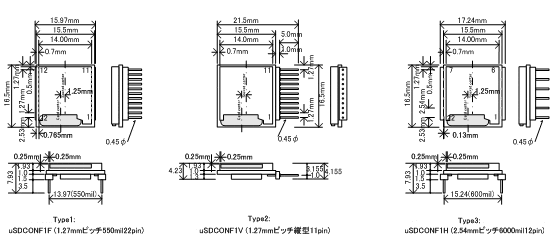
Figure 3. Dimensions of microSD-CONF1
microSD-CONF module can be reused on multiple boards
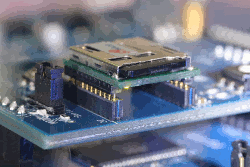 |
Mounting a socket on the board allows one microSD-CONF Modules can be reused on multiple boards I can do it. |
|
|
Figure 4. Socket usage example |
||
easy operation
1. Generate Programming Files in Quartus II (FPGA Designer)
2. Edit the control file with a text editor (FPGA designer)
3. On PC, copy programming file and control file to micoSD (anyone can do this)
4.3. Just set the microSD card in microSD-CONF, select the programming file to use with the rotary switch, and turn on the power (system verifier)
Since it is easy to update the programming files, it is possible to give remote work instructions by sending binary files via e-mail or FTP, reducing the burden on hardware developers.
Equipped with Nand Flash, configuration is possible even if the micro SD card is removed (microSD-CONF2)
The high-performance version of "microSD-CONF2" has a built-in NAND Flash secondary storage medium.
By copying the micro SD programming file to the built-in NAND Flash of the module, configuration is possible even if the micro SD card is removed. This reduces the risk of the micro SD card being stolen at exhibitions and the risk of binary files being hacked.
Configuration from built-in NAND Flash to FPGA is even faster (microSD-CONF2)
The high-performance version of "microSD-CONF2" has a built-in NAND Flash secondary storage medium.
Even faster configuration is possible by copying the micro SD programming file to the NAND Flash built into the module.
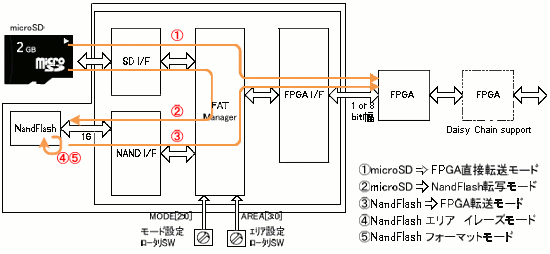
Figure 5. Block diagram of microSD-CONF2
Equipped with an update function
Since it has an update function, it can be updated even if the microSD-CONF itself has additional functions. Stay tuned for more features to come!
Product lineup
|
product name |
specification |
|
uSD-CONF1 |
Basic module for FPGA configuration using Micro SD card |
|
uSD-CONF2 |
Features of microSD-CONF1 + Built-in NAND Flash as a secondary storage medium inside the module |
If you would like more detailed information or are interested in our products, please do not hesitate to contact us.


